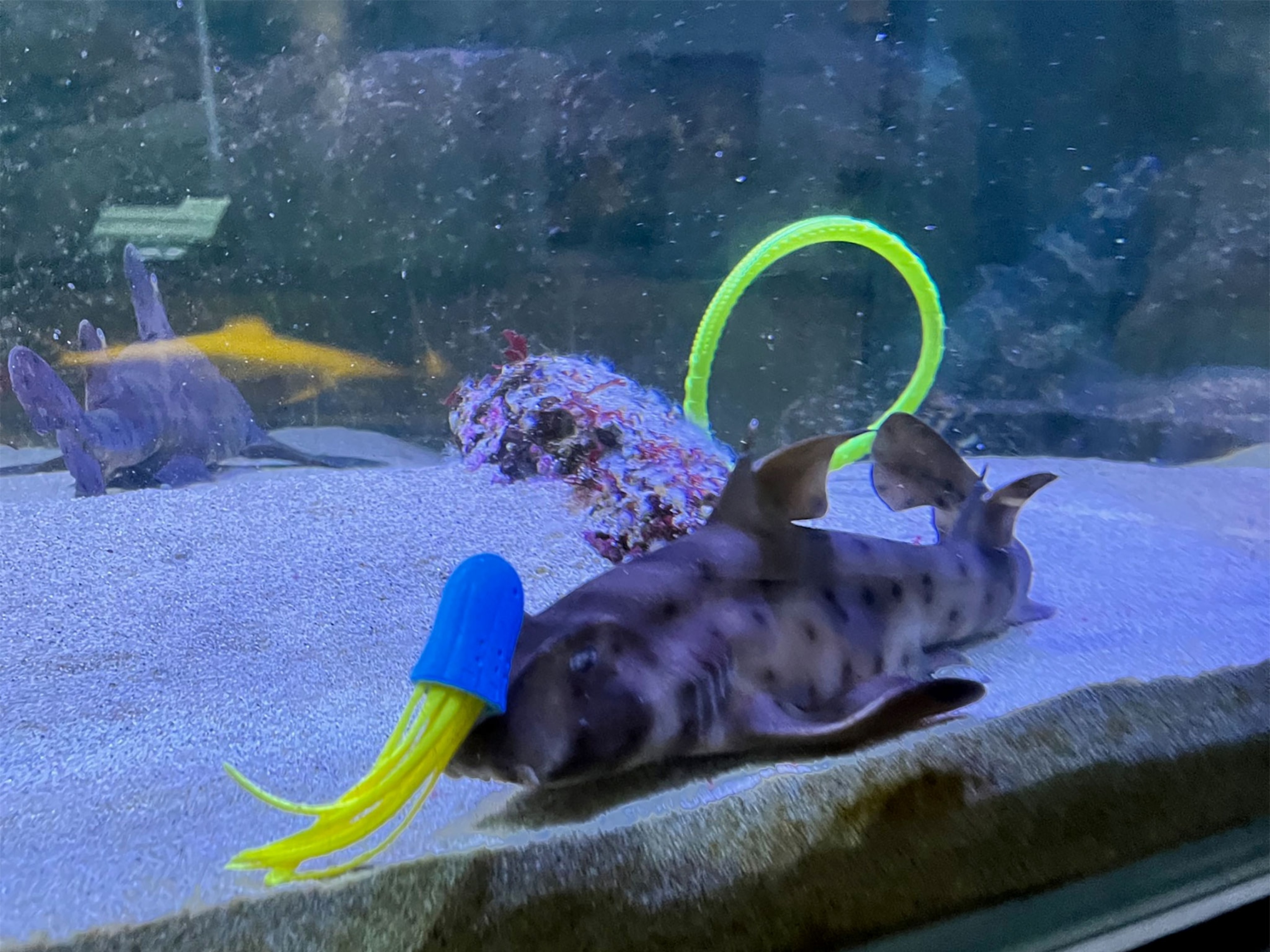
Huge Swarm of Gelatinous Sea Creatures Imaged in 3-D
Explosion of barrel-shaped salps to help with ocean studies.
A giant swarm of gelatinous sea creatures has been captured in 3-D—part of a new study that aims to help researchers better understand how blooms of organisms affect the ocean's carbon cycle.
During a 2008 research cruise, scientists imaged a massive gathering of a type of salp—a barrel-shaped, jellyfish-like organism. Such aggregations occur periodically off southeastern Australia in response to annual blooms of tiny plants called phytoplankton, the salps' prey.
Study leader Jason Everett knew that springtime was the right time to be on the lookout for salp explosions, he said by email.
(Mysterious Balls of Goo Are Rolling Onto American Beaches)
Even so, "we were extremely lucky—from the first net we put down right through to the last, we were getting thousands of salps," said Everett, of the Fisheries & Marine Environmental Research Facility at the University of South Wales in Australia.
Transparent except for their guts, salps are difficult to see—especially the species studied, the one- to ten-millimeter-long Thalia democratica. (See more pictures of translucent marine animals.)
Everett has swum in a salp swarm, and he described it as being like "swimming through a pool of jelly balls."
"Every time you take a stroke, you'd touch some little pieces of jelly. It's an odd sensation, given you can't really see the salps in the surf zone due to the waves and whitewater."
(See pictures: "Hard-to-See Sea Creatures Revealed.")
3-D Bloom Picture "Remarkable"
To research the swarm, Everett and colleagues first dropped a net to a depth of about 160 feet (50 meters) and vertically hauled the net and its salp harvest back to the surface for counting.
The team then deployed a salp-catching trawl that was towed behind the ship at different depths.
Lastly, the scientists towed what's called an optical plankton counter, or OPC, to depths between the surface and about 400 feet (120 meters). The small instrument uses an LED light to count and size up any small creatures in the water.
(Watch video: "Bacteria-size Babies Among Ocean's Smallest Life.")
"We managed to tow the OPC right through the center" of a cold-core eddy—a small, spinning current that traps nutrient-rich water, making it a hot spot for plankton.
"This was remarkable, because it enabled us to get a 3-D picture of the bloom," said Everett, whose study was published December 31 in the Journal of Geophysical Research Oceans.
Finally, the team compared how many salps were located in the eddy's heart with the numbers recorded from the net and trawl data.
The team found an average salp abundance of 5,003 animals per cubic meter inside the eddy with about 604 animals per cubic meter at its edges. (One cubic meter equals 35.3 cubic feet.)
"The numbers from this cruise are the largest recorded for this species that we are aware of," Everett said. Previously, the maximum recorded density of T. democratica salps was a thousand animals per cubic meter.
Salp Swarm Mysteries Remain
Ultimately, Everett and colleagues hope to figure out the exact conditions that spark salp swarms, other than plankton blooms.
"Phytoplankton ... is needed for food, obviously, but this doesn't automatically result in a salp swarm," he said.
"Other factors such as nutrient supply, the correct species of phytoplankton, or the right water temperature" need to occur, he said.
"There also needs to be a few salps around (or a 'seed population' as we might say) in order to bloom in the first place—you can't make something from nothing."
Since salps live for only a few weeks, "we are also interested in what happens to this biomass when the swarm dies," Everett noted.
"Salps bloom quickly, but they are also likely to run out of resources quickly [and die off]. Does this biomass sink to the seafloor? Or is it eaten by fish in the upper ocean?"
The answer, he said, has "significant implications" for our understanding of where carbon is stored in the oceans.



